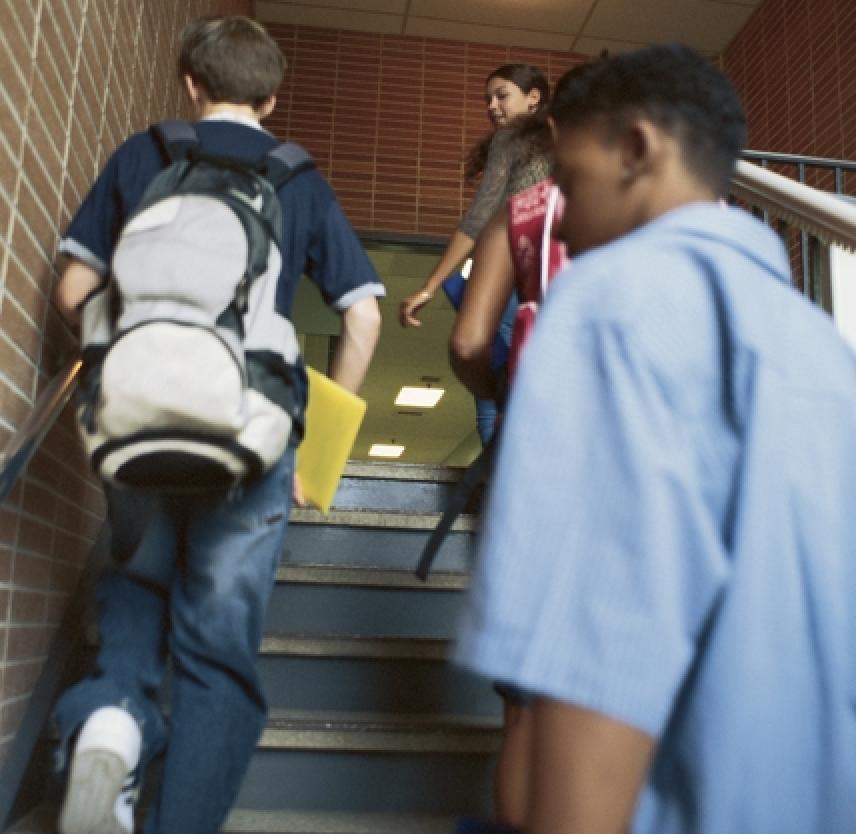
Part of the Greatest Challenges Families Face Series
After a child has a brain injury, family members work to help him or her successfully return to school. Some family members have a clear idea about their child’s needs. More often, family members are uncertain about their role and how best to work cooperatively with teachers. Remember that children do best when parents and educators communicate, develop common goals, and work together.
We have prepared a list of common problems to help you and your child’s teachers start to develop an effective return-to-school plan. The list also describes common accommodations. An “accommodation” is a change in teaching method or classroom environment to help your child learn. Review the list. Talk with your child’s rehabilitation providers and teachers to see which items on the list may be most helpful. Your child’s teachers will probably want to include at least some of these accommodations in his or her education plan.
Recommendations and Accommodations for School Children with Brain Injury
Attention/Concentration (“My child has difficulty paying attention.”)
- During lectures, seat the child near the teacher; seat the child in a study carrel for independent work.
- To help the child stay on task, avoid seating children near a window or doorway.
- Assign a peer buddy who can act as a role model. The “buddy” can signal when the child is not paying attention, off-task, or speaking out of turn.
- Break up activities into small steps and reward for completed tasks (e.g., give stickers, stars, smiley faces, verbal praises).
- Use a watch timer to help with time management. For example, the timer can be set to beep every five minutes, warning your child how much time has passed and how much time remains.
- Allow the child to focus entirely on lectures and avoid note taking. Provide notes from the teacher or another student.
Memory (“My child forgets to write down his homework assignments and then gets in trouble for not having them completed.”)
- Encourage children to silently repeat and write down instructions. Early on, the teacher should help and make certain that the child is accurately recording instructions.
- Teach memory strategies such as mnemonics, visualizations, numerous repetitions, and oral rehearsal.
- Help the child write down important information, including homework assignments and deadlines, in a single, well-organized notebook. The teacher should review the book before the child leaves for the day. A family member should review the book at home with the child on every school day.
- Use a peer buddy to help take notes, explain instructions, and assist with assignments.
- Tape record teachers’ lessons and instructions for use at home.
Test Taking (“My child freezes during a test when she studied very hard for it and knows the answers!”)
- Encourage studying a little bit every day rather than only one or two days before tests.
- Ask the teachers to provide modified test format (e.g., oral tests, reduced reading level, shortened tests).
- Allow extra time for test taking in a quiet room to reduce distractions.
- Before turning work in, have teachers remind your child to check his/her work.
- To accommodate slowness or severe motor problems, allow the child to tape record his or her responses to questions and have an assistant transcribe responses.
Planning and Organization (“My child has difficulty figuring out the steps to accomplish a task.”)
- Assist and teach the child to prioritize assignments according to deadlines, difficulty level, and estimated completion time.
- Have the teacher provide a written list of materials needed on a daily and weekly basis.
- To avoid misplacing school materials (e.g., pencils, erasers, rulers) frequently, help the child organize his/her desk and locker. Decide on a place for each important item and label each location with large lettering.
- Help the child create a notebook with dividers that are clearly marked for each subject, with a distinct area for writing down homework assignments. Also, create a binder where the child can place paperwork, reading materials, and homework in one place.
- Whenever practical, give the child written instructions with specific, sequential steps in addition to verbal instructions.
Impulsivity/Fidgeting (“My child gets in trouble with his teacher everyday for getting out of his seat!”)
- Give the child regular chances to get up and move around. Designate specific time and space where the child can do so without disrupting the classroom, such as when the teacher is passing out assignments or giving bathroom breaks.
- During group activities, provide the child with a set of instructions to follow and assign a peer buddy to assist him/her with starting and completing each task.
- Have the teacher ignore minor, inappropriate behaviors (e.g., the child answers a question out of turn).
- Reward for desired behaviors with verbal praises or smiley face stickers. In addition, only call on the child when his/her hand is raised.
- Ask the teacher to provide the child with a daily, detailed class schedule so he/she knows what to expect during each period.
- Teach the child how to self-monitor by creating a behavior chart. The chart should clearly state the target behavior(s) and how points or stickers are earned.
From the National Resource Center for Traumatic Brain Injury, Virginia Commonwealth Model Systems of Care. Reprinted with permission. https://tbi.vcu.edu/.

Comments (1)
Please remember, we are not able to give medical or legal advice. If you have medical concerns, please consult your doctor. All posted comments are the views and opinions of the poster only.
Anonymous replied on Permalink
Thanks for this helpful information for families and caregivers! Marilyn Colter www.BrainInjuryFamily.net